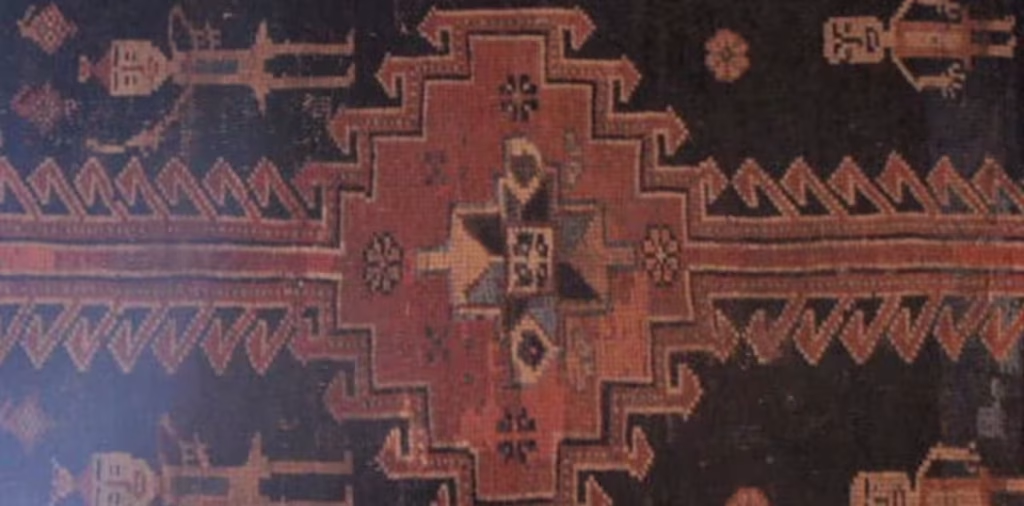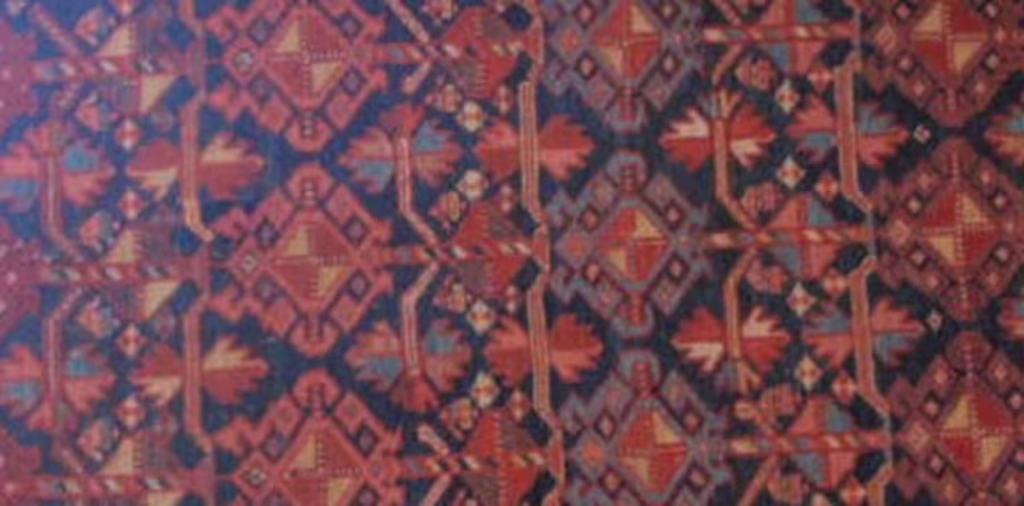Wool
The Persian lamb is widely known for its excellent wool. But even so, the quality varies considerably for several reasons. Climate and pasturage are two, since sheep from the hill regions, where the climate is colder, have more pliable and stronger wool than those from warmer places near sea level. Moreover, not only does wool from different sheep vary in quality but there is a considerable difference between the wool from different parts of the same sheep. The wool of the Persian lamb is particularly suitable for fug making. It gives a mixture of rather coarse, long and glossy outer hair and finer, shorter and softer undercoat. The outer hairs give the material the necessary strength and glossiness, while the undercoat is necessary for spinning. Wool with a high proportion of soft, fine undercoat is most suitable for clothes but not at all for rugs. These require coarser wool that gives a pile which is springy, dense, robust and glossy, i.e., wool with a preponderance of long outer hairs. The weft, on the other hand, does not require the high glossiness. Nor does the material need to be so robust, since it is held by the warp. Consequently the weft can be made from coarse, relatively short wool of a quality inferior to that used for the pile. The best wool in Persia comes from Kurdistan in the west and from Khurasan in the north-east. The sheep are generally sheared once a year, but sometimes twice. A particularly fine mixture is obtained by mixing the spring wool with lambs’ wool, i.e., the wool obtained in the autumn from lambs born that spring. This mixture is used only for the very finest rugs.
Naturally there are comparable wools to be found in other countries of the East. Turkey, the Caucasus Turkestan, India and China all produce wool fully equal to that from Persia.
Goat’s hair (cattle hair) is not used to any great extent for the pile but mostly for warp and weft as well as for edging the sides of the rug. Camel hair is now used very seldom. The Camel-hair browns, e.g., in the Hamadan rugs, are generally dyed wool. Camel hair has the unfortunate property of giving off a far from pleasant smell in hot, humid weather.
Silk
Silk is produced in the district round the Caspian Sea, where the climate is subtropical, and of course in China and Turkey. It is used for pile, warp and weft in the manufacture of exclusive, tightly woven rugs. Artificial silk has also been introduced in recent times. However, this material is not as durable as pure silk and its appearance deteriorates when it becomes soiled and has to be washed.
Cotton
Cotton is cultivated almost everywhere in Persia nowadays and spinning-factories are to be found in Tabriz, Kazvin, Isfahan, Yazd, Kashan and elsewhere. It is mostly used for warp and weft.
Flax is not particularly common in the warp and weft of oriental rugs. In Turkestan, India and sometimes even in Persia one finds rugs with the warp in this material, though these are usually particularly tightly woven rugs which need a thin warp.
Jute used to be used for the warp of Indian rugs, though not to any large extent. The material, which is hard and brittle, is not very durable.
After shearing, the wool is cleaned and sorted into different qualities according to use. It is then washed in streams or other watercourses, dried and bleached in the open air. After this treatment, it is sent to be carded. The nomads and some villagers, however, still card the wool by hand, using ancient methods.
The yarn is then spun by hand into different size according to use: the warp requires a yarn that is tightly and finely spun; the weft both coarse and fine yarn but not so tightly spun, and the pile a strong but quite loose yarn so that the ends of the knots have the appearance of brushes after they have been tied. There are very few places in Persia where machine-spun yarn is used. In China, on the other hand, all rugs are now made from machine-spun yarn.
Cotton yarn is mostly spun by machine but sometimes by hand in simple rugs, if the manufacturer cannot afford to have the yarn spun or is prevented by transport difficulties.
Tanners’ wool is a simpler and cheaper type of wool obtained from slaughtered animals. It is not cut from the hide but is loosened by a chemical process, which naturally affects its quality. This “dead” wool is never comparable with that from living animals; it is less durable, the dye does not take so well and the colours soon turn lifeless and shabby. The use of this type of wool is practically entirely confined to simple bazaar qualities.
The treatment of the wool involves so many important processes that it s worth mentioning a few details.
Before the sheep is sheared, it is usually washed if this is at all feasible. This gives two advantages; the wool will be cleaner and the animal is easier to shear. The wool is collected in bunches and immediately washed in running water. This should be done with great caution as the wool should remain greasy. It is then spread out on the ground to dry in the sun. It is turned continuously in order to get it dry as soon as possible and then it is sorted.
The dark and light wools are separated in sorting, since their use is always distinct and they are thus treated differently right from the start. Twigs and straw, which are always found, are also removed.
Carding is nowadays mostly done mechanically. But in the village and among the nomads the ancient methods are still in use. Large quantities are beaten with a bow-like instrument, with the bowstring drawn very tight.
Hand spinning is done according to one of two methods, either by use of the spinning wheel and distaff, or of a heavy, almost pear-shaped wooden top, which requires great skill and gives a surprisingly even and fine yarn.


